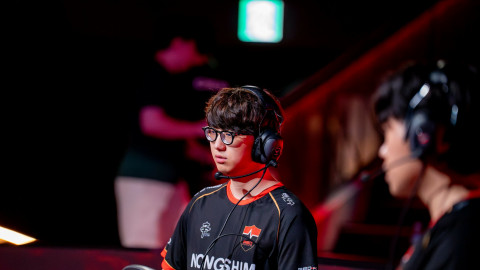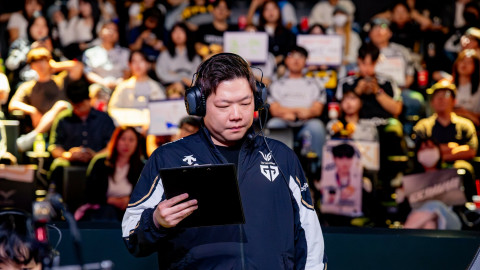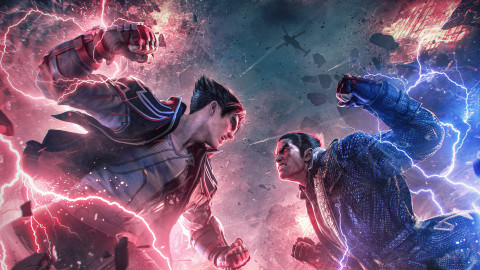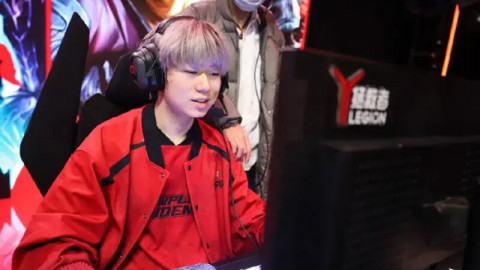
I was angry. As I rode Barcelona’s L3 metro heading for Plaza de Espanya, stressed and sleep deprived, the metropolitan faces that surrounded me were but an uninspired mosaic. Only he occupied my mind, or rather the community’s reaction to his inflammatory tweets.
How many times must we go down this path?
Again, I deleted yet another tweet that could have costed me my relationship with either a current or future coworker. We can’t understand each other from a point of anger, and sOAZ’s in-game and Twitter performance sprung plenty in detractors and, as a response, in defenders as well.
Now calmed, I’m not trying to convince anyone of my viewpoint. I hope that sharing it can lead to an overall better comprehension of the issues at hand. In my mind, the core problems for Fnatic are not player based, but instead arise from a poor understanding of several elements of the game.

sOAZ is a creative player that supports his team by creating space for them to succeed. This space can come in the form of engages, drawing several opponents into a sidelane or any other number of ways.
Therefore, there are two main situations in which he will look bad. Obviously, he will look bad whenever he performs poorly. The second one will happen whenever the space he creates, often expending summoners, compromising his lane or his life, are not taken advantage of by the rest of his team.
I can’t stress the concept of team enough. I will not address individual shortcomings of players in this article and will focus on the coordination and understanding of the game as a unit. Too often underperforming teams are run by the chopping block, where players are swapped in and out without the core issues never being addressed.
Abusing lane pressure
This is often referred to as Fnatic being bad at playing around midlane, but it really is just another way of conveying the same core issue. When on pushing matchups, Fnatic as a team rarely secures proper vision in the enemy jungle.
Not only is their warding scarce, but often missplaced or misstimed, committing significant amounts of vision after an objective has been secured or where a play won’t happen in the lifespan of the totems.
Kassadin has therefore been a remarkable thorn in Fnatic’s side. The team struggles to abuse the vision advantage they should secure against him, making it harder for them to snowball with the pressure advantage.
However, this lack of competence can also be felt whenever they have botlane priority, which is fairly common due to the laning prowess of the Rekkles Jesiz duo. They could be using the pushing matchup as a way to boost performance with river control, but choose not to. Often, Fnatic would rather have Broxah visit the bot side for a gank or dive, a less reliable source of advantages and sometimes even a mistake.

On their Play-in victory against Young Generation, this tendency proved itself to be the latter. While it is correct to stack gold the likes of Tristana or Kog’Maw, the Varus is more comfortable as a lane pusher that gets the payoff from deep jungle vision and lane priority.
Furthermore, Fnatic’s Rakan and Leblanc setup is perfect to abuse this advantage. By securing river control in the botlane, they could look to roam with the Rakan Shen combo against the immobile Syndra to get their Leblanc a big lead.
Fnatic had a draft that allowed them to abuse the laning phase for mid picks into a 1-3-1 with a snowballed Leblanc. Due to her mobility pairing phenomenally with Shen’s ultimate, assassinations with would be easy to obtain in the setup, thus having a reliable way to generate advantages through the whole game.
Instead of looking to milk the laning phase out, Fnatic chose to leave Caps hanging and break the game through botlane, despite having a comfortable control over river vision. As a result, they ended up trading turrets with Young Generation at the twelve minute mark.
By opening the map, they forfeited their valuable midlane pressure and heavily limited the amount of good ultimates sOAZ’s Shen could abuse, while not getting significantly ahead off of the play. Because of this, they struggled to close in a match where they were heavy favorites to come out ahead.
Ironically, this issue remained hidden through the summer split due to sOAZ being able to convert his advantages into team leads. As put by H2K’s toplaner Oddoamne on the talk show Narrative Wake “I think this guy (sOAZ) on the summer split was a genius … you would expect him to do something, he disappeared for thirty seconds … and all of a sudden he was midlane, ganking from the weirdest angle from the opposite side of the map...”.
Even though it’s easy to build back a narrative in which this iteration of Fnatic has focused on the botlane as we see how Fnatic play in the Worlds stage, this is factually incorrect.
During summer split, Broxah’s early top visits were frequent to a point of insanity, leaving many viewers wondering why teams were not punishing this pattern and gifting first bloods away. With his wildly successful Jarvan and Gnar, sOAZ would then move his advantage around the map, and make up for this key weakness in the controlled snowball.
This was so effective that we can still see Broxah often investing resources into toplane visits, even when the matchup does not merit them. During week one of the group stage, this tendency was a pressure sink for Fnatic that was putting them on the back foot.
Nevertheless, it was ultimately a sort of advantage in the matchup against Immortals, where this pathing choice was much less likely to be incorrect due to Flame’s more carry-oriented role.
In the clip, we can see how Broxah approaches top only to realize that no opportunity for a play is available. However, his presence is needed to help sOAZ shove the wave against IMT’s top tower to guarantee a good back, and a visit that would be useless in a different matchup ends up working out.
Because week two featured more relevant matchups in the toplane for Fnatic, this tendency was able to remain somewhat hidden. Come playoffs, Fnatic fans should be wary of tank vs. tank toplane drafts, and how much harder of a time his team has getting ahead with them.
Bad objective trading
If you were to know only about Fnatic’s objective trades in their week 2 game against Immortals, you would have a hard time putting them as favorites to win the game. Although the first turret was lost mostly on a bad lane matchup, from there on out Fnatic was able to come even or ahead in none of the turret trades.
Looking to take botlane towers after Immortals laneswap top, Fnatic concedes a more efficient gold distribution and a free Herald to Immortals. While Rekkles is helping his team equalize the gold lead, Cody Sun is able not only to get an extra wave of the farm over him but also solo gold from the toplane outer turret.
As Fnatic attempts for a toplane dive that ends up resulting in very little value, Tristana will rotate towards the midlane to make a play on the unattended turret, abusing the aforementioned Herald.
Immortals would come out of the play with a 500 gold advantage for their ADC and take a more valuable objective in the mid-outer turret, as bottom inner is practically meaningless in a toplane tank matchup. To top it all off, IMT also comes out with Fnatic’s blue buff off of the additional tempo provided by Rift Herald.
Had Fnatic rotated mid after taking IMT’s bot outer turret, it is unlikely that they would have lost any tower at all. Because Immortals was behind on the toplane push, Fnatic would have forced Lulu and Ezreal to go mid or forfeit themselves the crucial mid outer.
Of course, this is only anecdotal evidence, but it certainly showcases a common pattern. Not only would Fnatic later trade an Ocean drake for mid inner turret, but previous victories have served as a way to hide this fundamental macro weakness.
Although Fnatic was able to win the series in a 3-0, Hong Kong Attitude got a very substantial lead against them off of trading turrets as Tristana in their first game. It’s why she is such a relevant pick for the Europeans. Not only is Rekkles fantastic on it, but the team benefits a lot from denying the enemy the chance to punish their bad trades and often slow setups with her Explosive charge.
Closing issues
sOAZ’s community backlash came from a combination of three factors: social media interaction, performance, and expectations. There is a reason why people were praising him back in the EU LCS, where he not only featured the all-pro team for the region but also experienced a revival in performance and a career defining split.
The fact that much of his success came from both his Gnar and his Jarvan IV, with an impressive 15-1 record during the summer split, indubidatively stands out. One could come to think that, seeing how poorly Fnatic and sOAZ perform in comparison when he is on different picks, that he has some champion pool problems.
Albeit we will not discuss individual players, we can’t deny that these champions have kits that favor sOAZ’s strengths. However, they also work as a way of giving Fnatic means to close the game with, hiding their bad wave management and Baron setup.
With a stacked wave moving against Immortals bottom inner turret and one building in the toplane against Fnatic, Pobelter moved his Taliyah to clear the bot wave. This gave Fnatic the option to secure mid priority and rotate top to shove the wave back while securing some vision control with their numbers advantage.
Had Fnatic bought pink wards in their recent backs, this would have translated into an easy Baron. Cho’Gath and Twitch work wonders against teams coming from the blue side into the pit, and Cho’s feast is a strong tool to secure the objective. Even without optimal purchases, they had enough tools to clear the pit and threaten Nashor anyways.
Instead, Caps matched Pobelter on the bot wave looking to get a 1v1 from which he unfortunately came out severely behind. Luckily for Fnatic, Rekkles was able to get a flank on the enemy botlaner and initiate an engage that netted several kills for them and an infernal dragon, sinking into it valuable tempo. Whether because of greed or because again they don’t understand the timing of taking objectives, they headed for Nashor afterward.
Immortals ended up getting a kill off of bad coordination on the side of Fnatic and the Baron on top of it, as Fnatic was too late to the play for it to be smart. Even though this chain of events could still be ranked under their poor shotcalling around objectives, the fact that it was prompted by a pick and started with bad lane assignment makes it a new category on its own right.
When Fnatic captured the second Baron, there was a wave stacked past river in the toplane heading towards IMT’s inhibitor. Because they did not shove this wave, it took a full wasted minute of Baron buff for it to reach the top inhibitor. After they took it down, while Caps secured mid priority, Rekkles spent his time looking for a pick.
Had he backed and rotated bot to push, Fnatic could have secured a semblance of pressure on the midlane that could be occupied for the likes of Cho or Ryze for pressure on their botlane push. With supers on top and Nashored up minions in both mid and botlane, Immortals would have an impossible time defending against the waves.
However, they chose to forfeit midlane control in favor of shoving the botside as five, finding themselves with not enough pressure to force the botlane inner turret. Before they could take it, the buff expired.
They would keep looking for a pick as a way to again open a window for them to close the game out. Unfortunately, this amounted to nothing, as the fact that Rekkles was not selling his boots, and the two previous picks he had created before gave the plan away to IMT. They played with caution and were careful not to overextend.
Again, sOAZ’s role in his most successful champions was hiding a key weakness behind victories. Despite Cho’Gath’s superior baron control over other meta toplaners, what he brings to the table is far from enough to make up for both Fnatic’s setup and their shotcalling around Nashor.
With teleport flanks, sOAZ was able to ensure that Fnatic could get proper teamfights with which they could avoid Baron and shotcalling issues. Without them, even though the team was still able to often get ahead, they looked lost, as both fans and players were left wondering when the “real Fnatic” would show up.
While no player is exempt from criticism, the case is clear for Fnatic. They have core issues that are not the fault of any one particular player and are far more substantial a part in their defeats than any of the members.
I often get the question of “Who would you bench in team x?” if they are performing poorly, and it is usually a great way of improving the lineup. However, there comes a point where we must understand that some teams will not become world-class by virtue of a player swap.
League of Legends is a deep strategical game where no one can excel by virtue of swapping pieces expecting them to finally fit together. More often than not it’s the group, and not the individual, who has the biggest responsibility over the end result.
(Photo Credit : Fnatic.com)
If you liked this article, you clearly have good taste. You deserve a reward for that, treat yourself and follow my Twitter @Cabramaravilla to be the first to enjoy future pieces.
Disclaimer : The following article was written freely based on the author's opinion, and it may not necessarily represent Inven Global's editorial stance.
Sort by:
Comments :0






